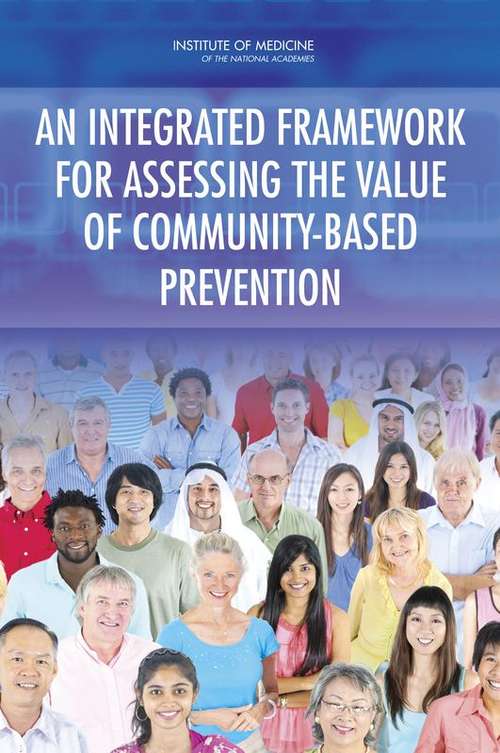An Integrated Framework for Assessing the Value of Community-Based Prevention
By: and and
Sign Up Now!
Already a Member? Log In
You must be logged into Bookshare to access this title.
Learn about membership options,
or view our freely available titles.
- Synopsis
- During the past century the major causes of morbidity and mortality in the United States have shifted from those related to communicable diseases to those due to chronic diseases. Just as the major causes of morbidity and mortality have changed, so too has the understanding of health and what makes people healthy or ill. Research has documented the importance of the social determinants of health (for example, socioeconomic status and education) that affect health directly as well as through their impact on other health determinants such as risk factors. Targeting interventions toward the conditions associated with today's challenges to living a healthy life requires an increased emphasis on the factors that affect the current cause of morbidity and mortality, factors such as the social determinants of health. Many community-based prevention interventions target such conditions. Community-based prevention interventions offer three distinct strengths. First, because the intervention is implemented population-wide it is inclusive and not dependent on access to a health care system. Second, by directing strategies at an entire population an intervention can reach individuals at all levels of risk. And finally, some lifestyle and behavioral risk factors are shaped by conditions not under an individual's control. For example, encouraging an individual to eat healthy food when none is accessible undermines the potential for successful behavioral change. Community-based prevention interventions can be designed to affect environmental and social conditions that are out of the reach of clinical services. Four foundations - the California Endowment, the de Beaumont Foundation, the W.K. Kellogg Foundation, and the Robert Wood Johnson Foundation - asked the Institute of Medicine to convene an expert committee to develop a framework for assessing the value of community-based, non-clinical prevention policies and wellness strategies, especially those targeting the prevention of long-term, chronic diseases. The charge to the committee was to define community-based, non-clinical prevention policy and wellness strategies; define the value for community-based, non-clinical prevention policies and wellness strategies; and analyze current frameworks used to assess the value of community-based, non-clinical prevention policies and wellness strategies, including the methodologies and measures used and the short- and long-term impacts of such prevention policy and wellness strategies on health care spending and public health. An Integrated Framework for Assessing the Value of Community-Based Prevention summarizes the committee's findings.
- Copyright:
- 2012
Book Details
- Book Quality:
- Publisher Quality
- ISBN-13:
- 9780309263542
- Publisher:
- National Academies Press
- Date of Addition:
- 03/07/14
- Copyrighted By:
- the National Academy of Sciences
- Adult content:
- No
- Language:
- English
- Has Image Descriptions:
- No
- Categories:
- Nonfiction, Medicine
- Submitted By:
- Bookshare Staff
- Usage Restrictions:
- This is a copyrighted book.
